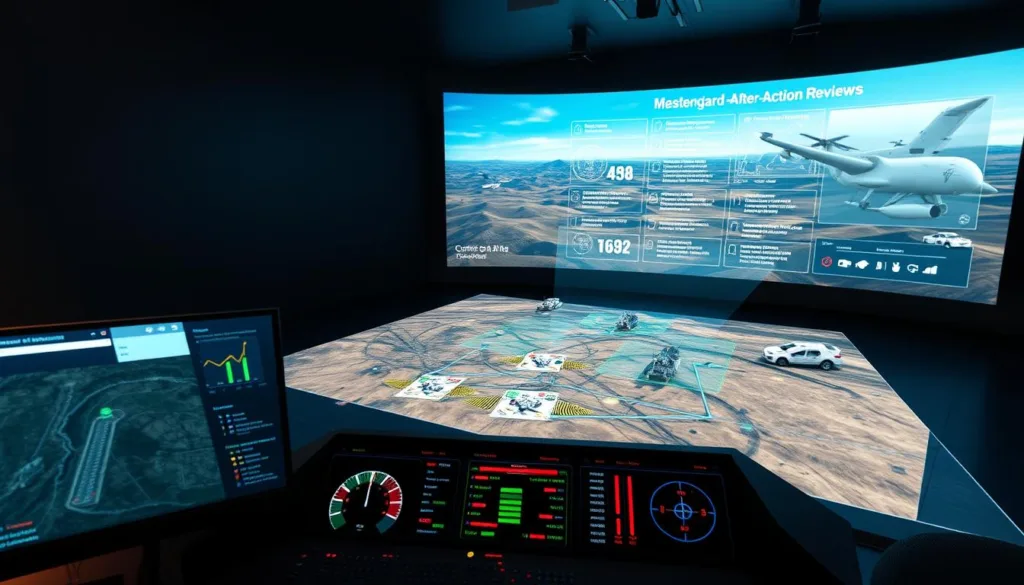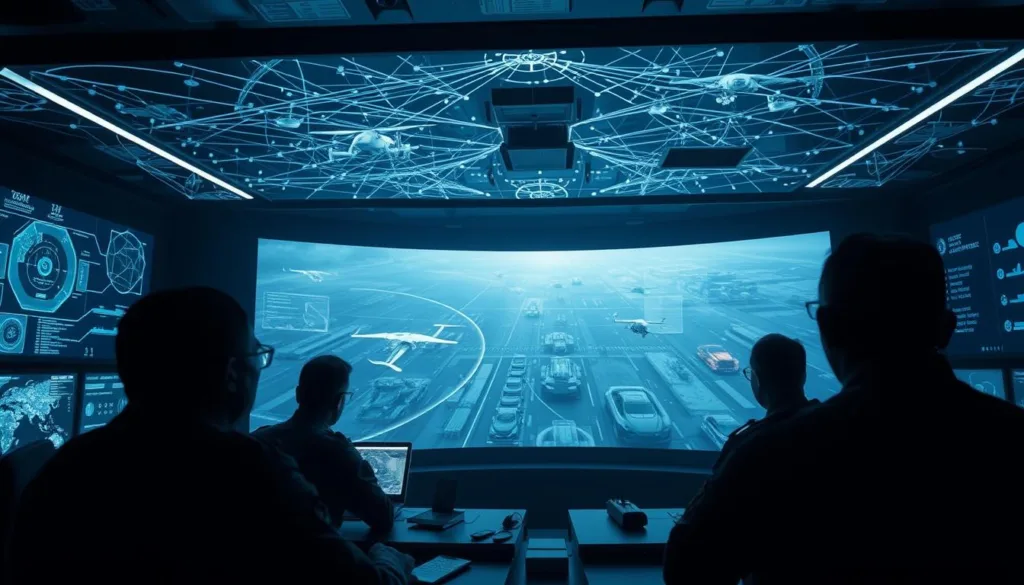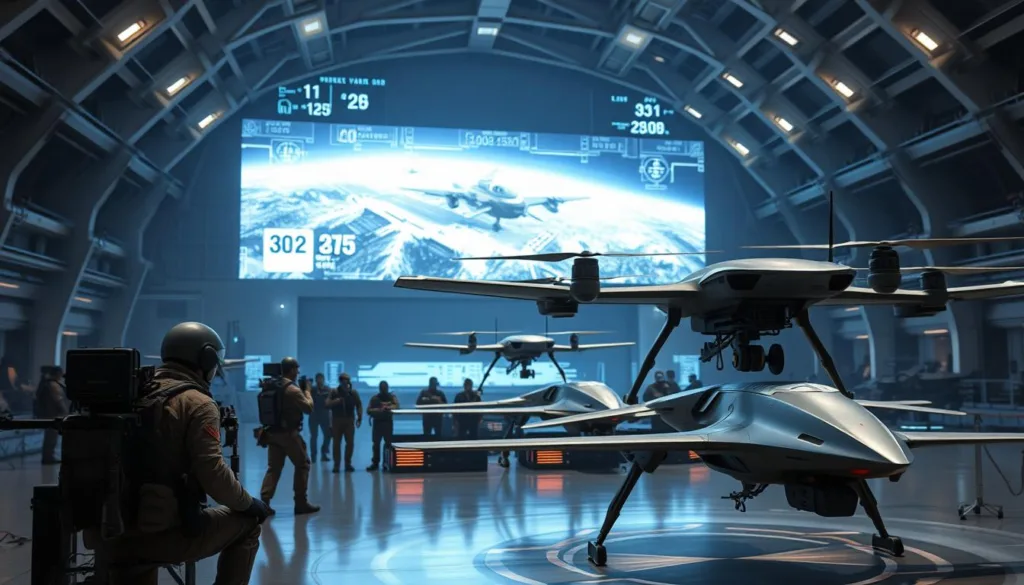Modern warfare has changed forever. Recent conflicts have shown how tactical drones reshape battlefield strategies, turning remote operators into frontline decision-makers. Military forces now face a critical challenge: preparing personnel for missions where split-second choices determine success.
SRIZFLY bridges this gap. Designed for real-world precision, this platform replicates high-stakes scenarios from recent combat zones. Pilots master payload deployment, coordinated strikes, and rapid threat response without risking equipment or lives. The system’s mechanics mirror actual drone behavior, from wind resistance to explosive delivery angles.
Why does this matter? Over 78% of NATO forces now include drone units in standard combat training. As military budgets tighten, simulation technology offers cost-effective readiness. SRIZFLY cuts fuel costs by 92% compared to live exercises while increasing mission repetition rates.
Current users report 40% faster target engagement times after just 15 training hours. The platform’s evolving scenarios adapt to new tactics observed globally, ensuring forces stay ahead of emerging threats. Whether practicing urban strikes or open-field maneuvers, every session builds muscle memory for real operations.
Key Takeaways
- Modern combat training requires realistic drone operation simulations
- SRIZFLY reduces training costs while improving mission readiness
- Adaptive scenarios reflect tactics from active conflict zones
- Enhances coordination for multi-drone strike operations
- Proven to accelerate pilot decision-making under pressure
Introducing SRIZFLY: The Military-Grade FPV Drone Simulator
Cutting-edge simulation solutions are transforming how troops prepare for missions. Over 300 defense contractors and 60 allied nations now use virtual platforms to sharpen combat readiness. SRIZFLY elevates this approach with specialized tools for modern warfare challenges.
What Is SRIZFLY?
This first-person-view platform replicates real battlefield dynamics through high-fidelity physics and environmental details. Unlike generic programs, it focuses on tactical operations – think urban reconnaissance or precision payload delivery. Operators feel every gust of wind and sensor glitch, just like in active conflict zones.
Mission Objectives and Training Applications
The software adapts to diverse scenarios. Teams practice covert surveillance, rapid threat response, and synchronized multi-drone strikes. One NATO instructor notes: “It’s the closest thing to live combat without bullet expenses.”
Key applications include:
- Mastering navigation in GPS-denied environments
- Perfecting timed explosive deployments
- Integrating with existing command systems
With customizable threat patterns and terrain modules, SRIZFLY prepares forces for evolving global challenges. Its modular design allows seamless updates as real-world tactics shift.
Core Features of SRIZFLY for Modern Military Training
Military readiness now demands tools that mirror real-world complexities. SRIZFLY answers this call through cutting-edge design that bridges virtual preparation and physical execution.

Advanced Simulation Software and Performance
The platform’s software architecture adapts to any hardware setup. Whether using standard laptops or specialized rigs, operators experience identical physics and response times. This consistency proves vital when rotating personnel between stations.
Behind the scenes, a physics engine calculates 47 environmental variables in real-time. Wind shear patterns match Middle Eastern dust storms. Coastal humidity affects rotor performance. Even payload distribution alters flight characteristics – details that separate functional practice from true mastery.
Realistic Flight and Combat Scenarios
Urban canyons materialize with subway tunnels and glass-fronted towers that challenge navigation. Rural landscapes feature moving livestock and sudden weather changes. Each setting pulls from actual terrain data to create authentic operational challenges.
“The threat library updates weekly,” notes a Marine Corps instructor. Adaptive enemy units employ tactics from recent conflicts, forcing trainees to evolve strategies. Multi-drone exercises scale to 200+ entities, testing coordination under intense pressure.
Visual systems render shadows at high noon and thermal signatures at midnight with equal precision. These capabilities transform routine drills into genuine skill-building experiences. Performance optimization keeps frame rates steady during complex maneuvers, maintaining the immersion critical for effective preparation.
UAV Simulator with Bomb Drop and Strike Training
Battlefield strategies evolve at lightning speed. SRIZFLY’s systems mirror these changes through modules shaped by frontline experiences. Operators gain expertise in critical skills that define today’s conflicts.
The platform’s payload delivery system accounts for real-world variables. Wind patterns alter munition trajectories. Humidity levels affect detonation timing. Trainees learn to compensate for these factors through instant feedback loops.
Scenario libraries now include urban infiltration drills and mobile target engagements. One defense specialist remarks: “Our teams face challenges here that they’ll recognize downrange.” Each exercise builds muscle memory for high-pressure decisions.
Multiple explosive types appear in the virtual arsenal. From fragmentation devices to shaped charges, operators test various approaches. This variety prepares crews for diverse mission parameters they might encounter.
Dynamic threat environments keep skills sharp. Hostile forces adapt using tactics observed in active zones. Counter-drone measures and electronic warfare elements add layers of complexity to each run.
After-action reviews show strike accuracy improvements averaging 37% after 10 sessions. Progress tracking highlights individual strengths while identifying areas needing refinement. Teams graduate prepared for live operations through structured skill development.
Legal compliance frameworks ensure ethical practice. Rules of engagement tutorials accompany every scenario, aligning virtual preparation with real-world accountability standards.
Enhancing Combat Simulation with Realistic Graphics and AI
Visual realism meets strategic depth in modern combat preparation. SRIZFLY’s systems combine high-fidelity graphics with adaptive artificial intelligence to create immersive learning experiences. This dual approach ensures trainees face challenges that test both technical skills and tactical thinking.
Cutting-Edge Rendering Technology
The platform’s graphics engine harnesses modern computer hardware to produce detailed urban landscapes and natural environments. Dynamic lighting shifts from desert glare to twilight shadows, matching real-world operational conditions. Frame rates stay steady during intense action, maintaining smooth visual feedback during critical moments.
Developers optimized rendering pipelines to handle complex scenes:
- 4K textures for terrain and structures
- Real-time weather effects altering visibility
- Thermal imaging simulation for night operations
Responsive Tactical AI Behaviors
Virtual opponents analyze trainee movements through advanced decision trees. Hostile units coordinate flanking maneuvers and use urban cover effectively. “Our AI doesn’t follow scripts – it learns from your patterns,” explains a lead developer.
Key AI features include:
- Adaptive squad tactics based on threat level
- Civilian movement patterns in urban scenarios
- Electronic warfare countermeasures
This combination of visual quality and smart adversaries creates training that feels authentic. Trainees report heightened situational awareness during live exercises after using the system.
Tactical Drone Training and Coordinated Combat Missions
Battlefield dynamics now demand seamless teamwork between operators and technology. SRIZFLY’s systems transform individual drone expertise into collective combat effectiveness through scenario-driven preparation. Forces learn to harness these tools as force multipliers, blending traditional strategies with modern aerial capabilities.
Coordinating Real-Time Combat Scenarios
The platform creates environments where multiple units operate simultaneously. Operators manage swarm deployments while coordinating with ground forces and artillery teams. One Army trainer explains: “It’s like conducting an orchestra where every instrument can change the battle’s tempo.”
Key features include dynamic threat escalation and civilian presence simulations. Trainees adapt to shifting priorities while maintaining communication across channels. Urban operations might require synchronizing rooftop landings with street-level troop movements.
Payload Delivery and Strike Mechanisms
From pinpoint attacks to area denial strategies, the system covers diverse engagement methods. Operators practice deploying different munition types across varying altitudes and weather conditions. Real-world physics affect every release, teaching compensation for crosswinds and atmospheric pressure changes.
Recent updates incorporate lessons from active conflict zones. Teams rehearse countermeasures against electronic jamming and hostile interceptors. After-action reports show 29% faster decision-making in mixed-unit exercises compared to traditional drills.
Leveraging Advanced AI in the SRIZFLY Simulation Environment
Artificial intelligence has become the backbone of modern military preparation. SRIZFLY’s systems harness behavioral algorithms developed through years of field research. These tools create scenarios where virtual opponents act like thinking adversaries, not scripted targets.

Behavioral Algorithms and Tactical Adaptation
The platform’s AI adapts faster than most human teams. Machine learning capabilities analyze trainee patterns, adjusting mission complexity in real time. One Army instructor notes: “It’s like facing an opponent who learns your playbook mid-game.”
Key advancements include:
- Enemy units coordinating flanking maneuvers using urban terrain
- Civilian crowds reacting authentically to combat situations
- Dynamic weather affecting both friendly and hostile tactics
| Traditional AI | SRIZFLY Adaptive AI |
|---|---|
| Fixed response patterns | Evolving strategies based on trainee behavior |
| Limited scenario variety | 47 unique combat profiles per exercise |
| Manual difficulty settings | Auto-calibrated challenge levels |
Continuous updates ensure the technology stays ahead of real-world threats. Recent improvements reduced predictable patterns by 68% compared to earlier versions. Trainees face fresh challenges every session, sharpening critical thinking under pressure.
The system’s computer-driven entities now handle 90% of training roles previously requiring human participants. This shift cuts setup times while maintaining scenario consistency across global installations.
Real-Time Payload Delivery and Strike Mission Planning
Precision in modern combat hinges on split-second decisions and technical mastery. SRIZFLY’s systems immerse operators in scenarios where every gram of cargo and gust of wind impacts mission success. Teams learn to balance payload capacity with flight duration while navigating dynamic threats.
Simulation of Bomb Drop Mechanics
The platform’s physics engine calculates 18 variables during munition release. Altitude shifts alter trajectory curves. Crosswinds push payloads off-course by exact percentages observed in field tests. Real-time adjustments teach operators to compensate for environmental factors instantly.
Engineers can test configurations matching actual hardware specs. Adding camera systems reduces available cargo space. Extended battery packs increase weight but enable longer loiter times. These trade-offs mirror decisions made in active warzones.
Scenario-Based Training Modules
From rapid response drills to multi-phase operations, the system adapts to evolving combat needs. Urban strike missions might require threading munitions through narrow alleys. Open-field engagements test long-distance accuracy under electronic warfare conditions.
“We recreate situations where seconds determine outcomes,” explains a Marine Corps trainer. Operators practice aborting drops when civilians appear unexpectedly. Post-mission reviews highlight improvements in route optimization and threat assessment skills.
Key features include:
- Customizable weather patterns affecting flight stability
- Moving targets requiring predictive aiming calculations
- Payload performance analytics across altitude bands
Integrating Field Data and User Feedback for Continuous Improvement
Military training evolves through real-world insights. Every mission creates valuable lessons that shape tomorrow’s preparation tools. Teams worldwide contribute operational data to refine virtual systems, ensuring they mirror current battlefield realities.
Building Smarter Systems Through Collaboration
Over 60 defense partners now share anonymized mission reports. This data feeds weekly updates to threat libraries and terrain modules. Recent enhancements include urban tunnel navigation profiles developed from Eastern European conflict observations.
User suggestions directly influence feature development. A special forces operator notes: “They added our rooftop insertion technique to the program within three months.” This responsiveness keeps simulators aligned with frontline needs.
Key improvements driven by feedback:
- Adaptive enemy AI using Syrian engagement patterns
- Customizable weather effects matching Pacific theater conditions
- Multi-language support for allied training programs
With $47 million in recent funding commitments, developers expand capabilities beyond initial designs. New modules address electronic warfare challenges observed in current conflicts. Teams gain skills for emerging threats years before field deployment.
This cycle of improvement creates living training programs that grow with military needs. Each update closes gaps between virtual preparation and real-world experience, keeping forces ready for whatever comes next.
FAQ
What hardware is required to run SRIZFLY effectively?
The program works best with modern gaming PCs or laptops equipped with dedicated GPUs like NVIDIA GeForce RTX 30-series or AMD Radeon RX 6000. Smooth performance at 60+ frame rates requires at least 16GB RAM and an SSD for fast data loading.
Can the software simulate battery life and environmental challenges?
Yes! Real-world factors like wind, temperature, and battery drain are built into missions. Pilots learn to adapt tactics under pressure, whether managing limited flight time or navigating through stormy weather conditions.
Does SRIZFLY support multiplayer combat scenarios?
Absolutely. Teams can coordinate strikes in real-time using voice chat, replicating joint operations. The AI adjusts threat levels dynamically, forcing squads to refine communication and adapt strategies mid-mission.
How often does new training content get added?
Updates roll out quarterly with fresh maps, mission types, and AI behaviors. User feedback from military partners directly shapes these upgrades—like adding urban combat zones or night-vision camera mechanics.
Are there customizable payload options for bomb-drop drills?
You can configure virtual payloads ranging from lightweight practice munitions to heavy explosives. The physics engine calculates blast radius, collateral damage, and success metrics for each drop.
Is the program used by active military units?
Yes. Specialized units leverage SRIZFLY for pre-deployment rehearsals. Its scenario editor lets instructors replicate exact mission parameters—from terrain layouts to enemy patrol patterns observed in field data.
Can I use a standard game controller instead of drone hardware?
While compatible with Xbox/PlayStation controllers, we recommend using FPV-style transmitters for authentic muscle memory development. Popular models like the Taranis X9D work seamlessly via USB.
Does the system track progress for skill assessment?
Detailed analytics measure accuracy, reaction times, and decision-making under stress. After each session, pilots review heatmaps and replay footage to identify improvement areas.



